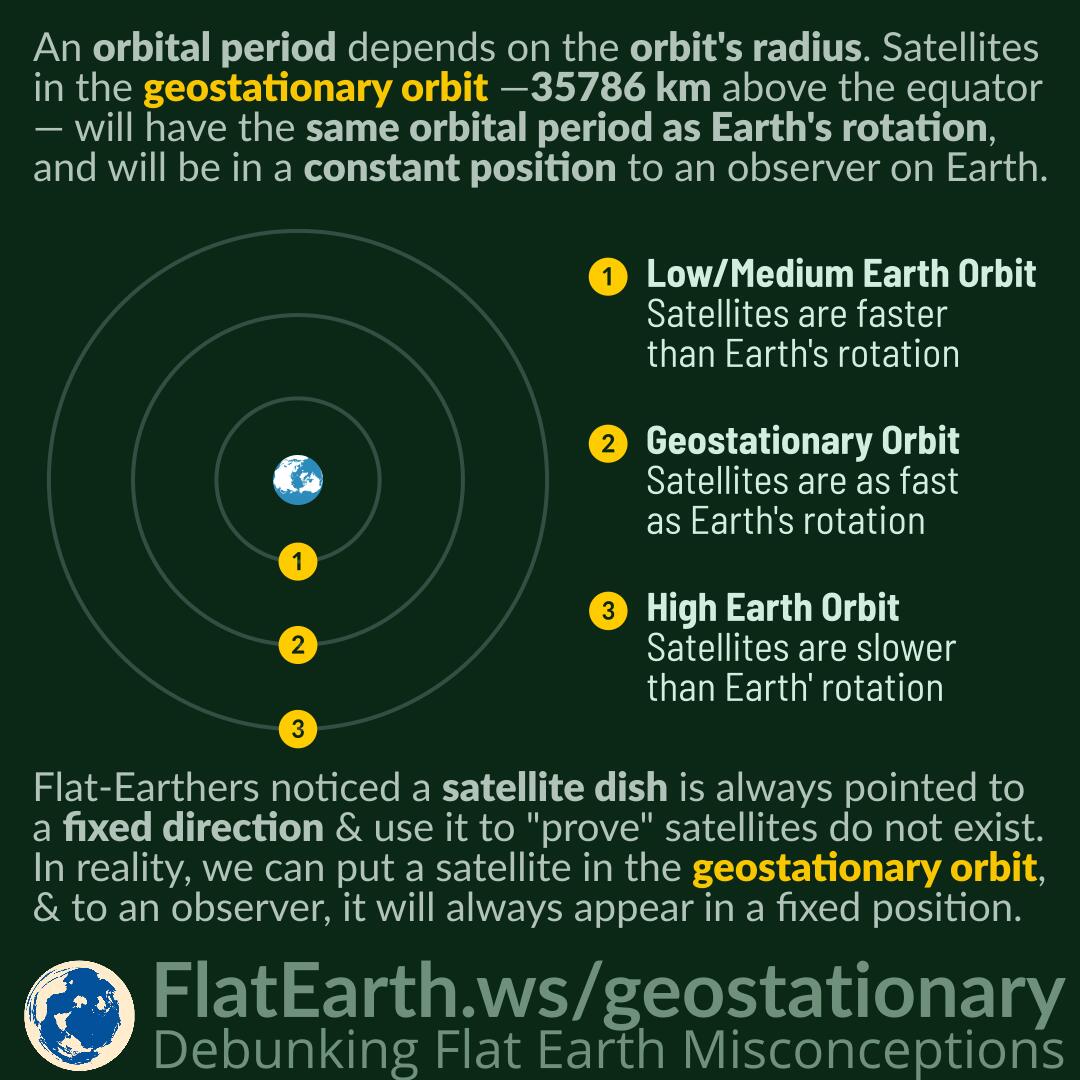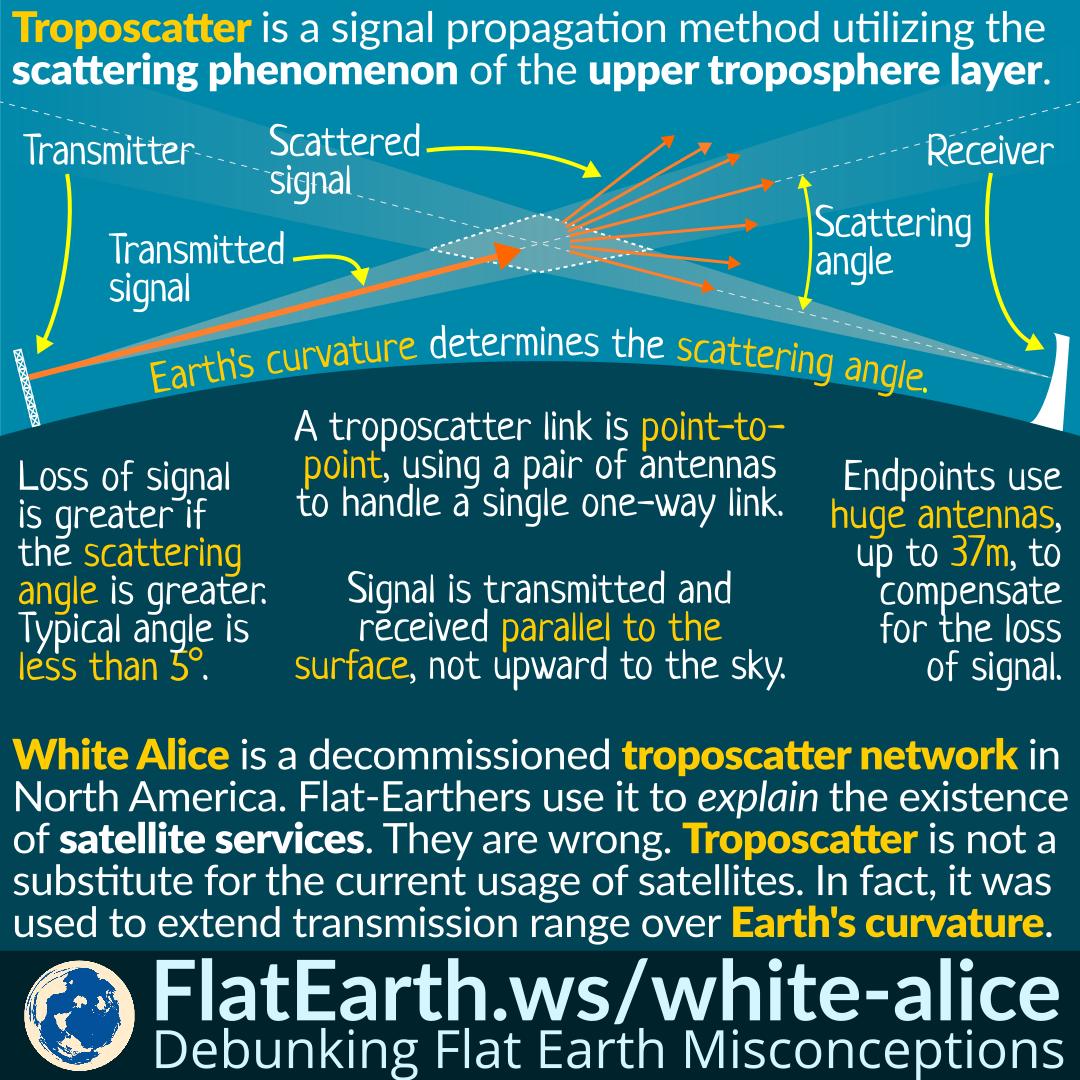If a satellite is placed in an orbit 35786 km above the equator, it will be in motion at the same speed as the Earth’s rotation. As a result, the satellite will appear practically motionless from an observer on Earth’s surface. Many communication satellites are in this orbit so that a satellite receiver does not need to track the satellite continuously.
Flat-Earthers often take the fact that satellites are in motion, and most satellite dishes have a fixed direction as ‘proof’ the receivers cannot be pointing to satellites. In reality, it is possible to place a satellite in a geostationary orbit to make it appear in a fixed position in the sky relative to an observer on Earth.



